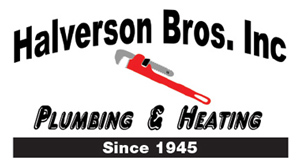Are you searching for an effortless and effective way to boost your indoor air quality at home? Whole-house air purifiers are an excellent option for removing airborne pollutants such as allergens, dust, mold and other damaging particles from the air. Purification systems can also get rid of airborne contamination such as pet dander, mold spores and smoke, generating a healthier environment for everyone in the home. With the appropriate air purifier, you’ll have a powerful tool in your arsenal for better indoor air quality in Menomonie and western Wisconsin.
Let’s explore the features of an air purifier and why they are really worth purchasing.
Will an Air Purifier Help Me?
Air purifiers are very effective at lowering levels of airborne particles like dust, mold spores, pollen, pet dander and smoke from the air. Some units are even strong enough to get rid of extremely small particles, such as those from odors or viruses, from your home’s air.
There are a lot of brands of air purifiers to choose from, ranging from compact, standalone models to whole-house air purifiers that work alongside your central HVAC system. Depending on the design, some purifiers use effective air filters while others depend on ultraviolet (UV) light for its sanitation abilities. Some models even use both for the highest air quality benefits.
What Do Air Purifiers Do?
Air purifiers draw in air from the home’s environment and trap undesirable pollutants and particles as they are pulled through a series of filters. These filters are built of fine mesh or activated carbon that is ideal for removing dust, molds, pet dander, smoke particles, chemicals and other airborne contaminants. The fan in the air purifier then distributes clean air into the ductwork for circulation.
How Does an Air Purifier Work?
Air purifiers pull in air with a fan before forcing it through one or more filters. Contaminants are gradually caught by the series of filters, and then the newly cleaned air is blown out of the purifier. Depending on its design, an air purifier may utilize electrical charges or ultraviolet light to take out additional particulates.
Other types of filtration found in air purifiers:
- High Efficiency Particulate Air (HEPA) filters: One of the most effective filter designs available, HEPA filters are constructed to clear out up to 99.97% of particles from the air—as little as 0.3 microns! Keep in mind that such efficiency can also reduce airflow.
- Activated carbon filters: These filters consist of finely ground activated carbon, which features an electric charge efficient at attracting things like odor particles.
- Photocatalytic oxidation: This process uses UV light to start a reaction that breaks down microorganisms like bacteria, mold and some viruses. With their DNA damaged, many microbes can no longer replicate and are basically eradicated.
Should I Get an Air Purifier for Dust?
Air purifiers are developed to help cut down on the levels of dust in your home, providing relief from allergies and other respiratory issues triggered by airborne particulate matter. By trapping particles like dust in their filtration systems, air purifiers can make the air in a room or house cleaner and fresher.
If you’re looking to minimize the dust in your home, contact a certified Lennox dealer to improve your indoor air quality in Menomonie and western Wisconsin.
Do Air Purifiers Help with Allergies?
High-efficiency air purifiers are designed to capture more than 99% of pollutants and particles, which means the air you inhale after it is processed by an air purifier is considerably cleaner and healthier. This helps diminish symptoms linked to allergies and respiratory illnesses, because it removes potential irritants from the air.
Do Air Purifiers Help with Mold?
Air purifiers remain one of the most reliable ways to fight mold. By trapping airborne particles and spores, they help prevent mold from evolving into a health hazard in small spaces. Additionally, many purifiers come with other features that are created to eliminate mold, such as activated carbon filters and ultraviolet (UV) lights. Activated carbon filters help get rid of scents and other undesirable elements from the air, while UV lights can kill any active mold spores in the air. Together, these features allow for a comprehensive cleaning of the air in your home or office, which is an important way to keep everyone comfortable and healthy.
Will an Air Purifier Get Rid of Bad Smells?
Not only do air purifiers help raise air quality by removing particles like dust, pollen, smoke and other allergens from the air, but some air purifiers also help remove any unpleasant aromas that might be stubbornly refusing to leave your home.
Air purifiers use a combination of filters, including activated carbon and HEPA filters, to trap and pull odors from the environment. This makes sure that your home will get back to smelling fresh and clean without any worry of lingering odors. By making an investment on a whole-home air purifier, you can be sure that that your home has exceptional indoor air quality and smells fresh and clean all year-round.






